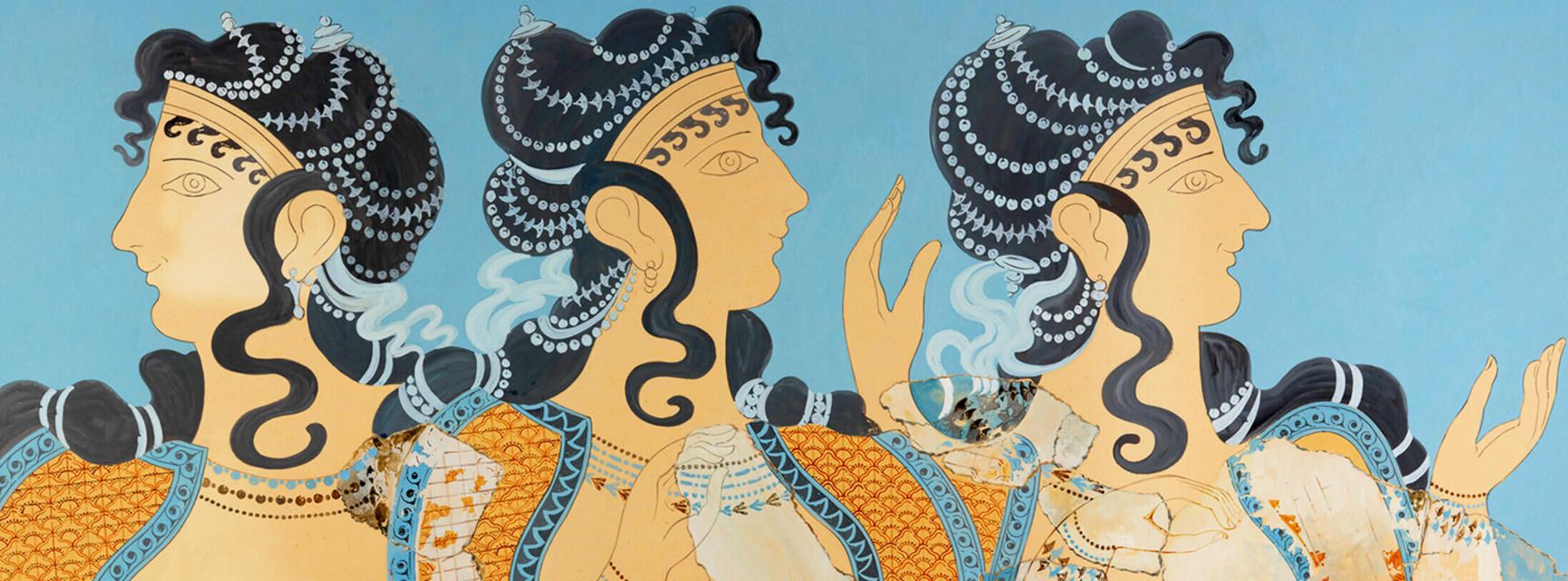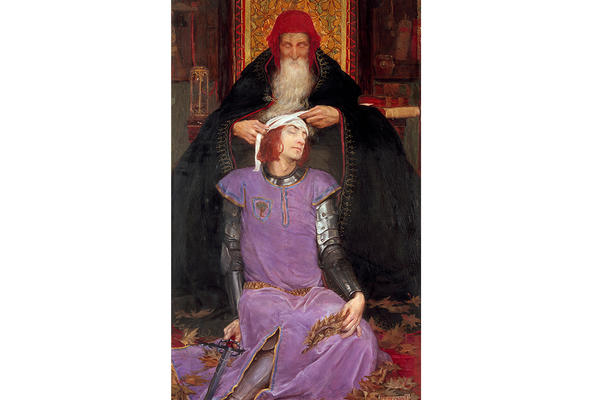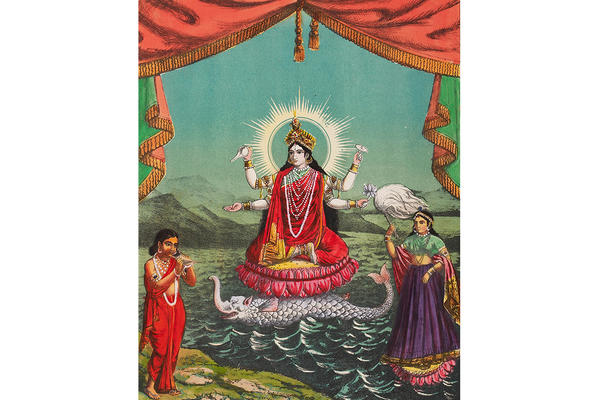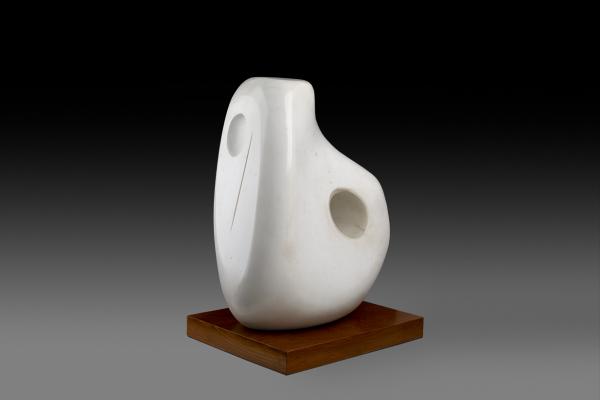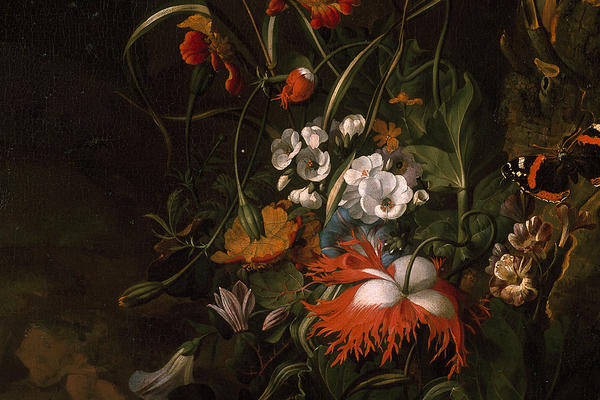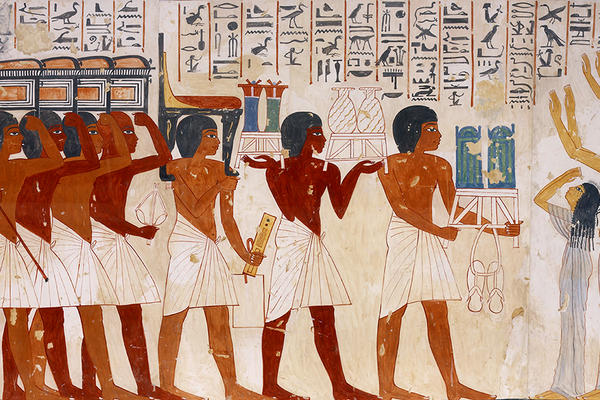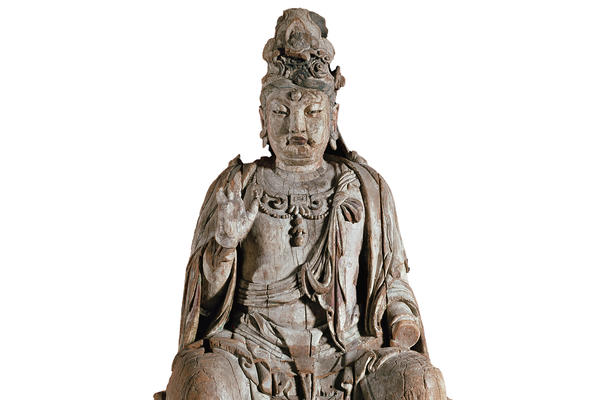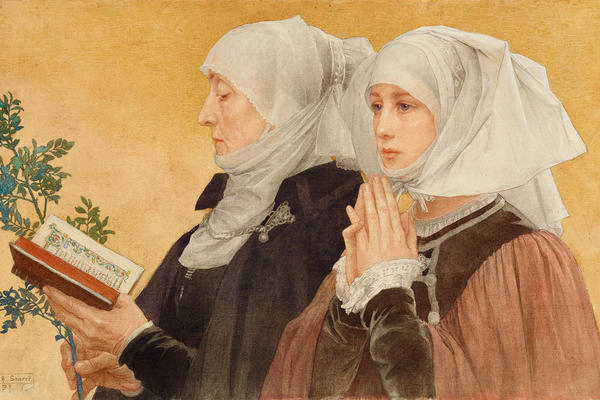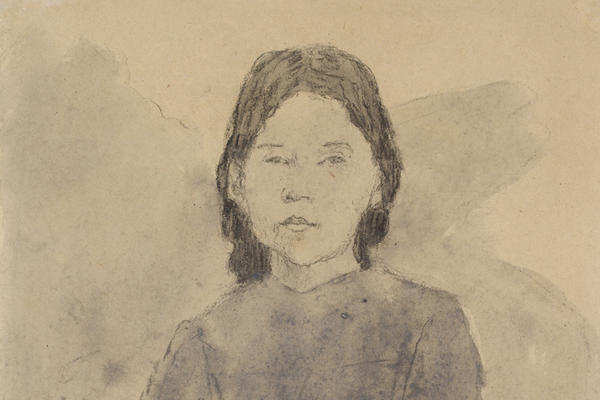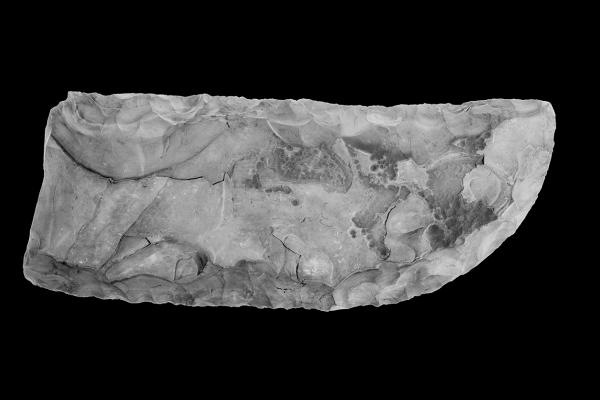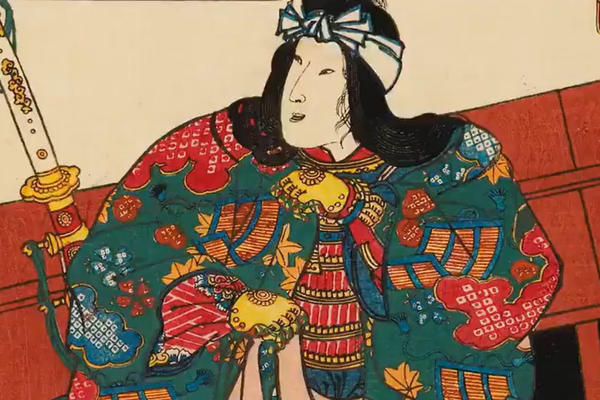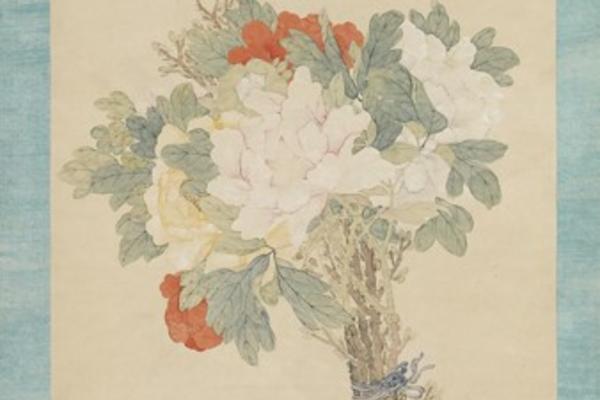SHOUT OUT FOR WOMEN
March is Women's History Month – an international month-long celebration of women's contributions to history, culture and society, with International Women's Day falling on 8 March.
Join us in sharing the Ashmolean's collections and stories which celebrate women’s achievements in art and archaeology throughout history and today.
Also discover the Shout out for Women Oxford Trail we produced in 2018 to mark the 100th anniversary of the Representation of the People Act 1918, which enabled all men and some women over 30 to vote for the first time.
ARTWORKS BY WOMEN & CELEBRATING WOMEN IN OUR COLLECTION
Cretan Snake Goddesses
Time the Physician by Eleanor Fortescue-Brickdale
Ganga Devi print, late 19th century
Talisman II by Barbara Hepworth
A 'Forest Floor' Still life of Flowers by Rachel Ruysch
Copy of a wall painting from Queen Nefertari's tomb by Nina de Garis Davies
Cloister Lilies by Marie Spartali Stillman
Acquisitions by Curator Mary Tregear
Elizabeth Sonrel: Les Rameaux
Gwen John: Seated Girl
Ceremonial Flint Knife discovered by Annie Abernethie Quibell
Female Samurai Warrior
OXFORD TRAIL
The Shout out for Women trail of objects through Oxford University's Gardens, Libraries and Museums, including the Ashmolean, highlights some of the incredible women represented in our remarkable collections and buildings, from artists and scientists to curators. Note locations may change from time to time, so please ask our gallery staff if you can't find what you are looking for.
The trail was created in 2018 to mark the 100th anniversary of the Representation of the People Act 1918.
Download the Shout out for Women trail (PDF)
WOMEN'S STORIES
Ariadne, an unsung ancient Greek heroine...
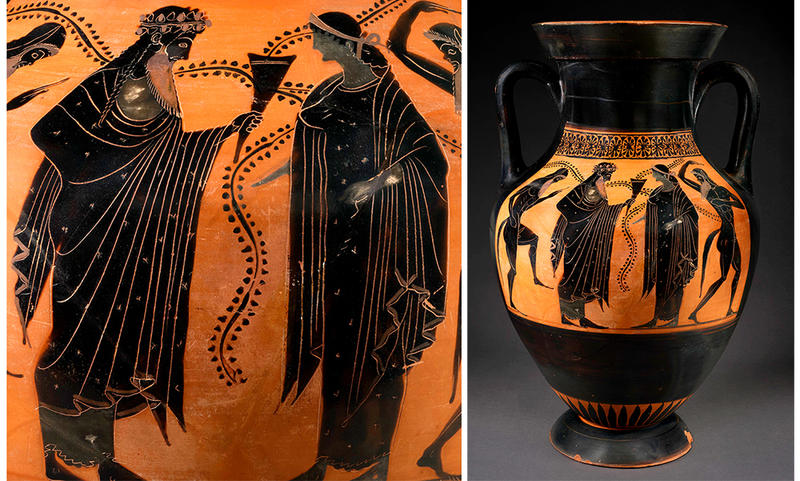
Left detail and right Attic black-figure vase depicting Dionysus and Ariadne attributed to the Rycroft Painter, 530–520 BCE, ceramic, h. 47 cm © Ashmolean Museum
In Greek myth, the Cretan princess Ariadne is an unfortunate figure, although perhaps an unsung heroine.
Firstly, she betrays her family in order to help the hero Theseus kill her half-brother, Asterion the Minotaur, who's hiding in the depths of the Labyrinth.

In most versions of the myth, Ariadne gives Theseus a ball of thread, often said to be red, to help him retrace his steps and escape the Labyrinth.
Then, her reward is to be betrayed in turn, when Theseus abandons her on the island of Naxos. Her fortunes, however, improve when the wine-god Dionysus finds her and they fall in love. Their story is brought to life in Zahra Hall's short animation, which features in the Labyrinth exhibition.
Watch the short animation about Theseus, Ariadne and the Minotaur
The vase (above) was painted around 530–520 BCE and shows Ariadne as the consort of Dionysus. She is very rarely shown with Theseus in Greek depictions. Vase painters tended to repeat the same scenes: Theseus kills the Minotaur and Ariadne drinks wine with Dionysus.
The vase is included in the Ashmolean’s new exhibition, Labyrinth: Knossos, Myth & Reality. This also features finds from the palace of Knossos, whose heyday was 1,000 years before the vase was made. Although there are no recognisable depictions of Ariadne from this period, there are a number of colourful frescoes showing women in elaborately woven and embroidered clothing.
...and the women of Crete

Restored watercolour 'Ladies in Blue' Fresco, undated by Émile Gilliéron père (1850–1924), watercolour, 95 × 161 cm © Ashmolean Museum
Textile manufacture was the most important export industry in Bronze Age Knossos, and depictions such as the ‘Ladies in Blue’ Fresco shows that women remained closely associated with these colourfully dyed textiles and perhaps controlled their production. Ariadne’s ball of thread could be a distant memory of the role of women in the Bronze Age rather than just a symbol of betrayal.
Attic vase
AN1911.256
Ladies in Blue Fresco
AJE/4/1/12/1/3
Both on display in the current Labyrinth exhibition
Queen Agathocleia, silver drachm
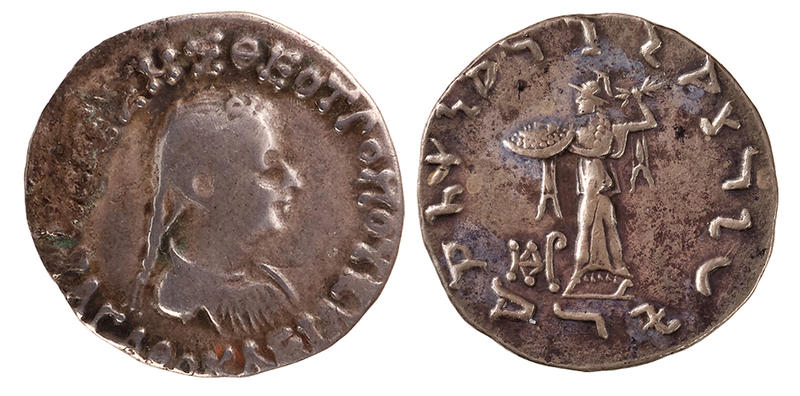
Queen Agathocleia Indo-Greek coin front and back, 180 BCE to AD 10, HCR51787
Among the rulers of the Indo-Greek kingdom which existed in modern Pakistan and India from around 180 BCE to AD 10, Agathocleia stands out.
She is one of very few women to appear on the coins minted in the kingdom and, uniquely, uses the title ‘basilissa’, queen.
On some coins she is shown alongside a king called Strato, on others Strato appears alone, and on a different, rare, group we find Agathocleia by herself. When women appear on coins in this period, they are usually depicted alongside their husbands.
What made Agathocleia different, and led to coins being struck with her image alone? Unfortunately, the coins are the only evidence we have for the existence of Agathocleia (and Strato), making it difficult to draw a conclusion.
HCR51787
Agathocleia and Strato tetradrachm
On display in Coins at the Crossroads of Asia, Money Gallery
Clara Peeters, Still Life of Fruit and Flowers, 1612–1613
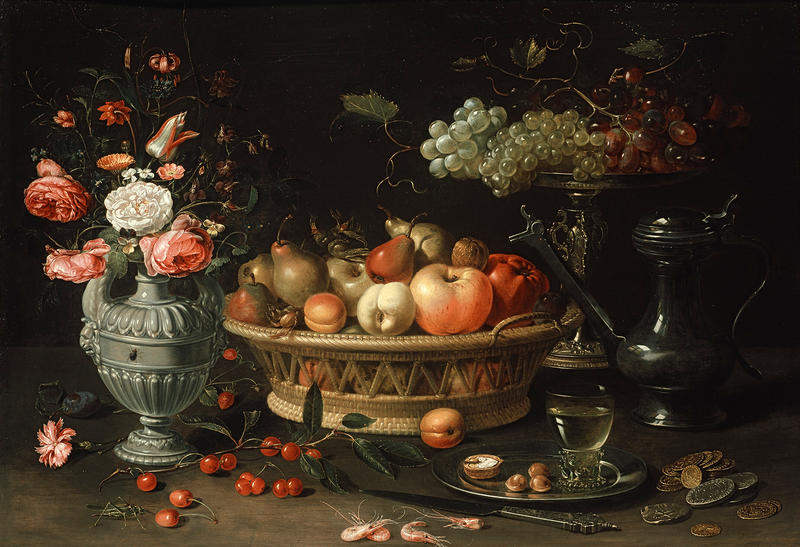
Still Life Painting of Fruit and Flowers by Clara Peeters, 1612-1613 © Ashmolean Museum
Although little is known about her life, Clara Peeters is thought to have been one of the first professional women artists of the Dutch Golden Age and early modern Europe.
This elaborate still-life, at 64cm wide x 89cm high, is one of her largest paintings and shows a table richly laden with fruit, flowers, nuts and shrimp. It’s executed in oil on copper. Copper was a popular choice for artists at the time because it lends itself particularly well to finely detailed brushwork and is a non-absorbent surface.
The coins you see on the right of the painting helped to date the work to after 1609, while the silver wedding knife appears in five of her other paintings.
It's a highly skilful work and is part of one of the most comprehensive collections of 17th-century Dutch and Flemish still-life paintings in the world. The collection was put together by Theodore Ward and his wife Daisy Linda Ward (1883–1937), a painter from New Jersey, who bequeathed the collection to the Ashmolean.
WA1940.2.61
On display in the Still-Life Paintings gallery 48
On the Shout out for Women trail
Julia Margaret Cameron's intimate photographs, 1866 & 1867
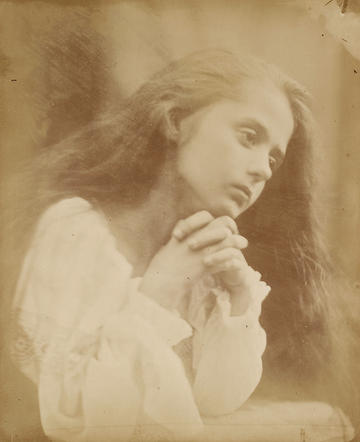

Left: Girl Praying (Florence Anson), 1866. Right: My Favourite Picture of all My Works (Julia Jackson), 1867. By Julia Margaret Cameron © Ashmolean Museum
Julia Margaret Cameron was an early pioneer of British portrait photography and well known for her soft-focused portrait photography. She was greatly admired by the Pre-Raphaelites.
Her photographs were rule-breaking: purposely out of focus, and often including scratches and smudges. She also posed her sitters as characters from biblical, historical or allegorical stories.
Cameron was born in Calcutta in 1815. But she only started taking photographs in her 40s, after moving to England in 1845. She made her home in Freshwater on the Isle of Wight.
Early in 1866, when this poignant photograph of young Florence Anson was taken (above left), Cameron had moved into a highly creative period with the camera. She started to take a new direction as her children had all left home, moving closer in to the subject.
Her photographic career, however, was very short. She only worked for 11 years, but she created over 1,000 photographs of many famous people and family friends.
Lena Fritsch, the Ashmolean's Modern and Contemporary Art Curator, reflects:
'She creates these really dreamy images and the soft focus photographs of women link to her concept of beauty which is a very Victorian, English concept of beauty, at the time. A Christian concept, also inspired by classic mythology.
'And the sitters are interesting. She has all these different people in front of her lens. Photographs of Julia Jackson (above right) are in the Ashmolean collection, who was Virginia Woolf's mother. Very beautiful photographs of her.
‘But then all these different important men. John Herschel; the dramatist Henry Taylor; Charles Darwin was photographed by her.'
WA.OA1348 & WA.OA1352
Not on display
Julia Margaret Cameron & her contemporaries
Western Art Print Room
Fang Zhaoling, Lotus, 1980
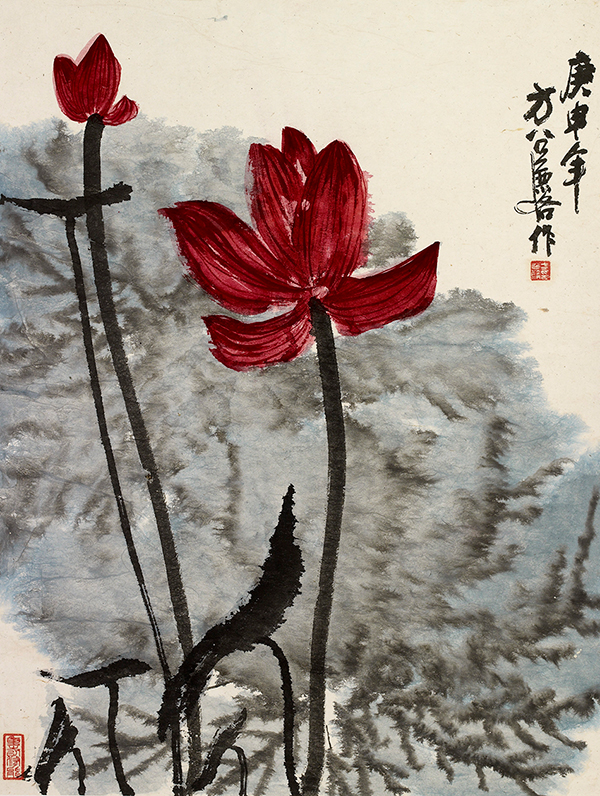
Lotus by Fang Zhaoling, 1980
This striking hanging scroll created in ink and colour on paper is by Fang Zhaoling (1914-2006), one of the foremost women artists of 20th-century China. Born in Wuxi in Jiangsu province, she was educated privately at home and later attended school in Shanghai and university in the UK, at Manchester.
She led a remarkable life. She married in 1938 and after several difficult years in war-torn China, she and her husband settled in Hong Kong. Following his early death in 1950, Fang Zhaoling resumed the painting studies of her youth and counted among her teachers leading artists such as Zhao Shao'ang and Zhang Daqian.
In the 1950s she studied at Oxford and she spent much of the following decade in London.
She experimented with abstract styles, but always remained true to the traditions of Chinese ink paintings, which she often made contemporary through her choices of humanitarian and environmental subjects.
Throughout her career she exhibited widely in the United Sates, Europe and East Asia. She travelled extensively. In 1973, she returned to China to climb Mount Huang in Anhui province.
LI2153.4
Not on display
Buy the print
Lizzie Siddal, Two Men in a Boat and a Woman Punting, c 1853–5
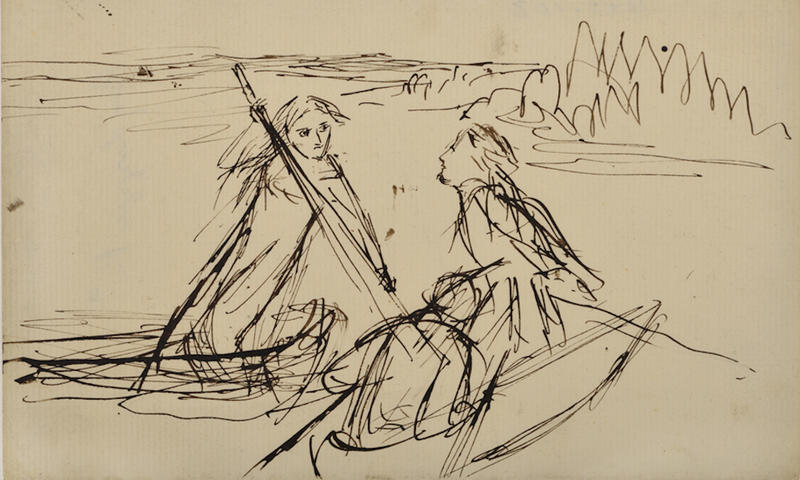
Two Men in a Boat and a Woman Punting, c 1853-5, Elizabeth Siddal
Lizzie Siddal was the 19th century's proto-supermodel. Her beauty inspired the artists and poets of her generation, who presented her as a mysterious, fairy-tale creature. We tend to know her through the filter of the men who painted her (as one of the Pre-Raphaelite stunners) but in the Ashmolean Museum archives you can encounter the real Lizzie.
Behind the silent muse of Pre-Raphaelite art was a vibrant, creative woman, who was herself a talented poet and artist.
Siddal was the only female artist to exhibit alongside the Pre-Raphaelites, at the summer exhibition at Russell Place in 1857. She was the wife and muse of the group’s leader, Dante Gabriel Rossetti, and often frequented Oxford.
She became one of the most famous Pre-Raphaelite ‘stunners’, painted extensively by the Brotherhood, and one of the most famous faces of the Victorian age.
She produced over 100 works of art in her short life. She’s buried in Highgate Cemetery, London, in the Rossetti family plot.
Her work was recently featured recently in our Pre-Raphaelites: Drawings & Watercolours exhibition in 2022.
WA1977.103
Read more about Siddal and the Pre-Raphaelite 'stunners'
Episode 4 of Objects Out Loud podcast
Elvira Bach, Untitled, 1983
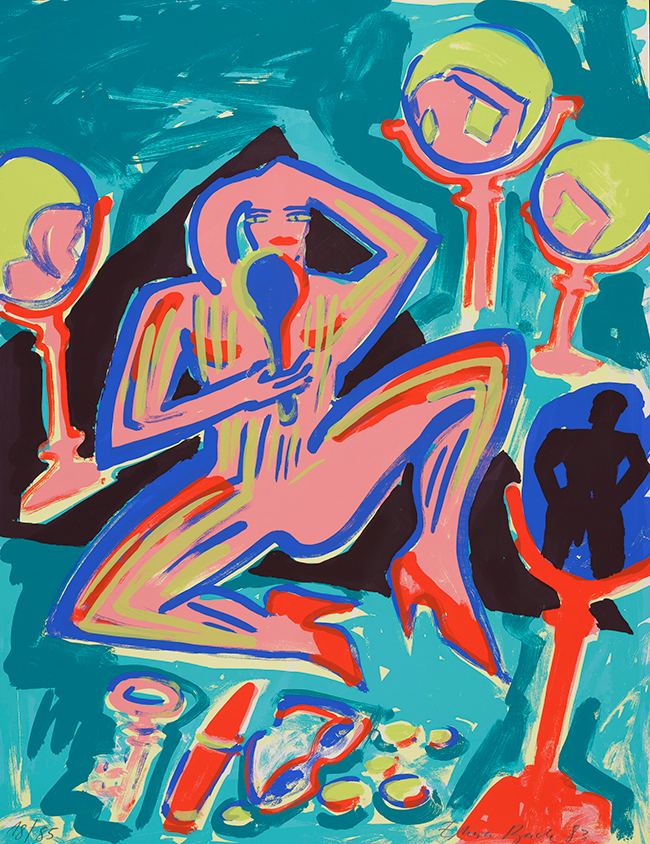
The German artist Elvira Bach (b. 1951) is best known for her stylised and flamboyant self-portraits, in which she portrays herself as a spiky character with red lipstick, lacquered nails, and high heels. In the 1970s and 80s, she focused on scenes from her world of artists, parties, and romances in West Berlin.
Her gouaches and pastels show a female figure lying lovesick on a bed, dancing in San Domingo, or catching a torrent of spilled red wine.
In this gouache drawing, Bach's avatar lies admiring herself in front of an array of accessories, mirrors, and pocket change, with the reflected silhouette of a male onlooker in the foreground.
Bach’s work captures both the dynamic energy of West Berlin, as well as the growing impact of the feminist New Women’s Movement in Germany, who marched under the slogan ‘The private is political’.
Bach came to Berlin in the early 1970s to study at the Akademie der Kunste, where she befriended other young students like Salomé and Rainer Fetting. Together with other Berlin artists, including Luciano Castelli and Ina Barfuss, they became known as the ‘Junge Wilde’ or ‘Young Wild Ones’. They quickly gained international acclaim for their exuberant figurative artwork that drew on Germany’s Expressionist tradition of gestural painting.
Like Bach, many of these artists dealt with personal themes of gender and sexuality in their work. In a subversion of male artists’ objectification of the female subject as a muse on a pedestal, Bach’s sensitive and reflexive self-portraits celebrate herself as a complex figure with deep interiority, flaws and all.
Her work featured prominently in our Young & Wild? Art in 1980s Germany: Punk, Painting & Prints exhibition in 2022.
WA2002.197.1
Not on display


